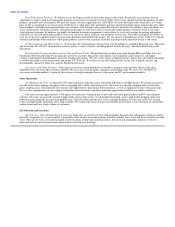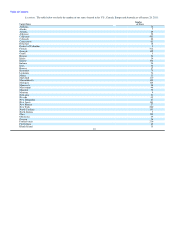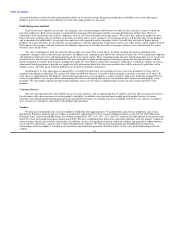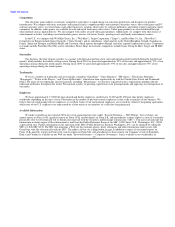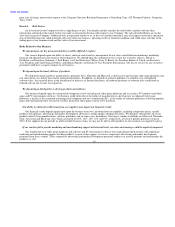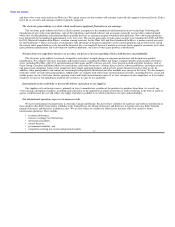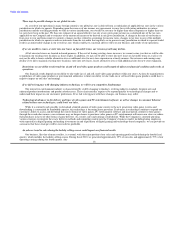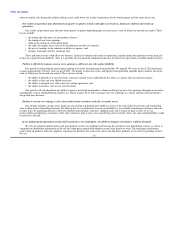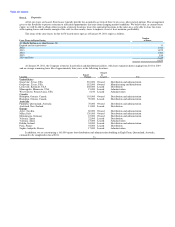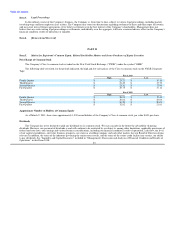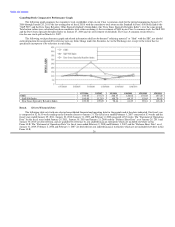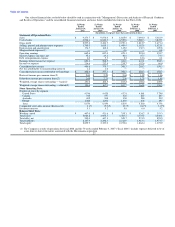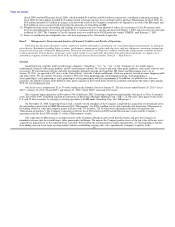GameStop 2010 Annual Report Download - page 35
Download and view the complete annual report
Please find page 35 of the 2010 GameStop annual report below. You can navigate through the pages in the report by either clicking on the pages listed below, or by using the keyword search tool below to find specific information within the annual report.
Table of Contents
adverse trend in sales during the holiday selling season could lower our results of operations for the fourth quarter and the entire fiscal year.
Our results of operations may fluctuate from quarter to quarter, which could affect our business, financial condition and results of
operations.
Our results of operations may fluctuate from quarter to quarter depending upon several factors, some of which are beyond our control. These
factors include:
• the timing and allocations of new product releases;
• the timing of new store openings;
• shifts in the timing of certain promotions;
• the effect of changes in tax rates in the jurisdictions in which we operate;
• the mix of earnings in the countries in which we operate; and
• changes in foreign currency exchange rates.
These and other factors could affect our business, financial condition and results of operations, and this makes the prediction of our financial
results on a quarterly basis difficult. Also, it is possible that our quarterly financial results may be below the expectations of public market analysts.
Failure to effectively manage our new store openings could lower our sales and profitability.
Our growth strategy depends in part upon opening new stores and operating them profitably. We opened 359 stores in fiscal 2010 and expect
to open approximately 300 new stores in fiscal 2011. Our ability to open new stores and operate them profitably depends upon a number of factors,
some of which may be beyond our control. These factors include:
• the ability to identify new store locations, negotiate suitable leases and build out the stores in a timely and cost efficient manner;
• the ability to hire and train skilled associates;
• the ability to integrate new stores into our existing operations; and
• the ability to increase sales at new store locations.
Our growth will also depend on our ability to process increased merchandise volume resulting from new store openings through our inventory
management systems and distribution facilities in a timely manner. If we fail to manage new store openings in a timely and cost efficient manner,
our growth may decrease.
Failure to execute our strategy to close stores and transfer customers and sales to nearby stores.
Our strategy includes closing stores which are not meeting our performance hurdles or stores at the end of their lease terms and transferring
sales to other nearby GameStop locations. We believe that we can ultimately increase profitability by successfully transferring customers and sales
to other stores by marketing directly to the PowerUp Rewards members who have shopped in the stores which we plan to close. If we are
unsuccessful in marketing to customers of the stores which we plan to close or in transferring sales to nearby stores, our sales and profitability could
be adversely affected.
If our management information systems fail to perform or are inadequate, our ability to manage our business could be disrupted.
We rely on computerized inventory and management systems to coordinate and manage the activities in our distribution centers, as well as to
communicate distribution information to the off-site, third-party operated distribution centers with which we work. The third-party distribution
centers pick up products from our suppliers, repackage the products for each of our stores and ship those products to our stores by package carriers.
We use 19


